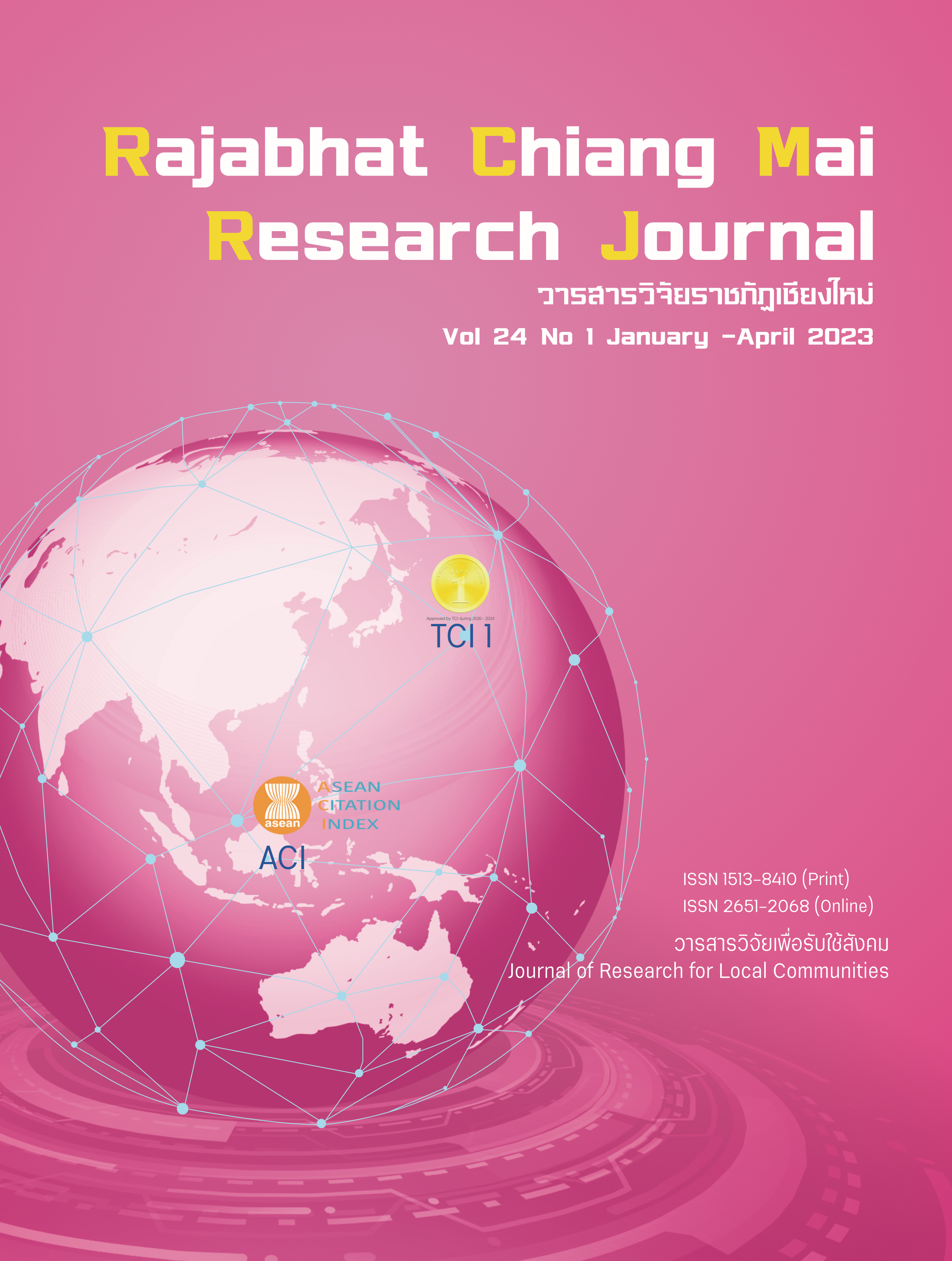Confirmative Component Analysis of Management Optimization of Educational Organizations
DOI:
https://doi.org/10.57260/rcmrj.2023.261086Keywords:
Corroborative component analysis, Optimization, Organization managem, EducationAbstract
This research aimed to analyze the corroborative components and examine the correspondence between the corroborative structure of the management of educational organizations and the empirical data. The sample consisted of 400 educational administrators in Thailand. The instrument used in this research was a questionnaire with a confidence value of 0.95 in the whole questionnaire. For Confirmative Component Analysis and second corroborative component analysis, the results showed that Educational Organization Management Optimization Components. The components whose weights were arranged in descending order include Organizational structure, Human Resources, Organization Management and Leadership. The results showed that first confirmed components that all index values were found to pass the criteria. They had an element weight of 0.01-0.15 with a statistical significance of .01 and a second-order confirmation component analysis result. All index values were found to pass the criteria. The constituent weights of 0.26-1.26 were statistically significant at .01. The harmonization index between the model and the empirical data was p = 0.09, CMIN/DF = 1.59, GFI = 0.99 and RMSEA = 0.02. It made you aware of the components of organizational management optimization in education to be used to further develop educational organization management efficiency.
Downloads
References
Arbuckle, J.L. (2013). IBM SPSS Amos 22 User’s Guide. U.S.A. IBM Corporation.
Department of Industrial Works. (2020). Industrial statistics. Retrieved from https://www.diw.go.th/webdiw/static-fac/
Fatehi, K., & Franza, R. M. (2020). Systems considerations for adopting just-in-time production. Journal of Competitiveness Studies, 28(2), 143-157. https://iblog.iup.edu/americansocietyforcompetitiveness/files/2021/05/JCS-Vol-28-2-2020-Table-of-Contents.pdf
Goulielmos, A. M. (2019). Plan the Business of a Vessel of a Tramp Shipping Company. Modern Economy, 10(06), 1633-1653. DOI: 10.4236/me.2019.106107
Gupta, R. (2019). Reconciling service levels by customers on a non-constrained production line for raw material and finished goods inventory levels. Iowa State University Ames, Iowa
Jackson, D. L. (2003). Revisiting Sample Size and Number of Parameter Estimates: Some Support for the N:q Hypothesis. Structural Equation Modeling A Multidisciplinary Journal,10(1), 50 – 64. https://doi.org/10.1207/S15328007SEM1001_6
Joshi, A., Kale, S., Chandel, S., & Pal, D.K. (2015). Likert scale: Explored and explained. British. Journal of Applied Science & Technology, 7(4), 396-403. DOI:10.9734/BJAST/2015/14975
Kline, R. B. (2016). Principles and Practice of Structural Equation Modeling. (4thed.). New York, NY: The Guilford Press.
Lin, R. (2019). The importance of successful inventory management to enterprises: A case study of Wal-Mart. In 2019 International Conference on Management, Finance and Social Sciences Research (MFSSR 2019). London: Francis Academic Press.
Montri, T. (2015). School curriculum administration of school administrators under the jurisdiction of the area office Secondary Education Area 16. (Master Thesis, Hatyai University). (In Thai)
Nagakumari, P., & Pujitha, N. S. (2021). Employee Welfare Measures in Manufacturing Industry. The International journal of analytical and experimental modal analysis, 13(8),1153-1162. https://www.researchgate.net/publication/354562559_Employee_Welfare_Measures_in_Manufacturing_Industry
Prachi, J. (2022). Organization Management - Meaning, Need and its Features. Retrieved December, 25th 2022. Retrive from https://www.managementstudyguide.com/organization-management.htm
Pothongsangarun, T., & Kumplanon, N. (2017). Efficiency Enhancing of Logistics Management for the Sugar Industry Group: Case Study of Wangkanai Sugar Factory Group. The Journal of KMUTNB, 27(2), 371-378. https://ph01.tci-thaijo.org/index.php/kmutnb-journal/article/view/166491/120258 (In Thai)
Quangyen, T., & Yezhuang, T. (2013). Organizational Structure: Influencing Factors and Impact on a Firm. American Journal of Industrial and Business Management, 3(2), 229 – 236. DOI:10.4236/ajibm.2013.32028
Schumacker, R. E., & Lomax, R. G. (2015). A Beginner's Guide to Structural Equation Modeling. (4thed.). New York, NY Routledge.
Susanto, R. (2018). Raw material inventory control analysis with economic order quantity method. In IOP Conference Series: Materials Science and Engineering, 407(1), 012070. IOP Publishing.
Turner, R. C., & Carlson, L. (2002). Index of Item Objective Congruence for Multiple Objective Measures. Unpublished manuscript, University of Arkansas.
Wesley, C. (2022). Definition Human resource management (HRM). Retrive from https://www.techtarget.com/searchhrsoftware/definition/human-resource-management-HRM
Downloads
Published
How to Cite
Issue
Section
License
Copyright (c) 2023 Rajabhat Chiang Mai Research Journal

This work is licensed under a Creative Commons Attribution-NonCommercial-NoDerivatives 4.0 International License.
1. Articles, information, content, images, etc published in the “Community and Social Development Journal” are copyrighted by the Community and Social Development Journal, Chiang Mai Rajabhat University. In order to properly distribute the articles through print and electronic media, the authors still hold the copyright for the published articles under the Creative Commons Attribution (CC BY) license, which allows the re-distribution of the articles in other sources. References must be made to the articles in the journal. The authors are responsible for requesting permission to reproduce copyrighted content from other sources.
2. The content of the articles appearing in the journal is the direct responsibility of the article authors. The editorial board of the journal does not necessarily agree with or share any responsibility.














